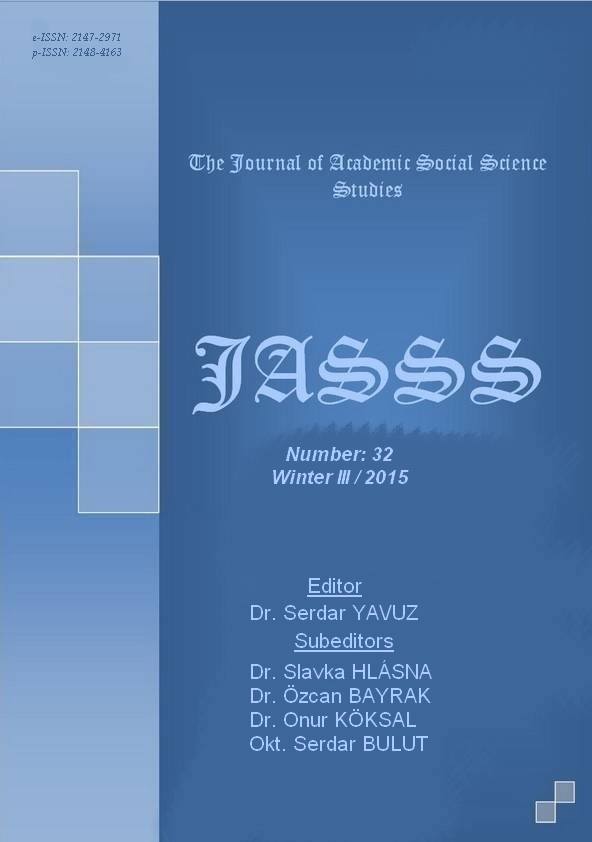Author :
Abstract
İnsanlar çeşitli nedenlerden ötürü değişen dünyaya ayak uydurmak için yabancı dil öğrenme ihtiyacı hissetmektedirler. Türkiye’nin stratejik önemi ve diğer ülkelerle olan ilişkilerinin neticesinde yabancı dil olarak Türkçe öğrenme isteği ve ihtiyacı özellikle son zamanlarda önem kazanmıştır. Türkçe köklü bir dil olmasına rağmen Türkçenin yabancı dil olarak öğretimi oldukça yeni bir alandır. Yabancı dil öğretimi, ana dildeki kavramların karşılığını hedef dilde bulup ifade etmek değil; o sözcüklerin hangi ortamlarda, ne zaman kullanılacağını bilmektir. Bunu kazanabilmek ise o dile etki eden unsurlardan kültür aktarımı ile mümkündür. Kültür, günlük hayatta çarşıda, pazarda, okulda, evde konuşulan kelimelerde; deyimlerde, atasözlerinde ve türkülerde gizlidir. Günümüzde dilbilimciler yabancı dil öğretimini kültür aktarımı olarak görmektedir. Hedef kültüre ait insanlarla sağlıklı iletişim kurabilmek dil bilgisi ve gramer yapısının ötesinde hayata onların penceresinden bakmayı gerektirir. Türkçenin sözlü kültür varlığını atasözü, deyim ve kalıp sözler gibi kalıplaşmış dil birimleri oluşturur. Bunlardan kalıp sözler toplumun hafızasında belli durumlarda söylenerek iletişimi kolaylaştırmasıyla bilinmektedir. Bu çalışmada Babam ve Oğlum filminde geçen kalıp sözler tespit edilmiştir. Belirlenen kalıp sözler ise anlamlarına ve işlevlerine göre 23 başlık altında gruplandırılmıştır. Bu film, dil seviyesi ve yaş grubu uygun öğrencilere birçok kalıp sözün nerede ve ne zaman kullanacağı hakkında bilgi, gerçek bir kültürel deneyim kazandıracaktır. Filmde, kalıp sözlerin geçtiği diyaloglar değiştirilmeden yazılmıştır. Filmler hem temel dil becerilerinin kazandırılmasında hem de gerçek hayatı ve kültürü yansıtmasıyla en etkili görsel-işitsel materyallerdir. Bu tarz materyaller sayesinde Türkçe öğrenen öğrencilerin Türk kültürüne karşı tutumları ve bakış açıları değişebilir. Film öncesinde, sırasında ve sonrasında öğretmenin hazırlayacağı etkinliklerle de öğrenme ortamı zengin bir hâle getirilebilir.
Keywords
Abstract
Abstract People feel the need to learn foreign language to keep pace the changing world for various reasons. As a result of Turkey’s strategic importance and relationship with other countries, the desire and need to learn Turkish has gained importance recently. Although Turkish is a rooted language, it is quite a new field to teach Turkish as a foreign language. Foreign language teaching is not to find the equivalent of the concepts in mother tongue and express them in target language, but it is to know where and when to use those words. It is possible to gain this ability with cultural transmission that affects the language. Culture is hidden in the words that are spoken in daily life, in the market, in the bazaar, at school, at home and in the statements, proverbs and folk songs. Today linguists see the foreign language teaching as a cultural transmission. For a healthy communication with the people of target culture it is necessary to see the life in their points of view beyond structure and grammar. Stereotyped language units as idioms, proverbs and formulaic expressions form the verbal cultural presence of Turkish language. These formulaic expressions are in the society’s memory and they are known as simplify the communication in certain situations. In this study the formulaic expressions are identified in the film Father and Son. These formulaic expressions are grouped under 23 headings according to their meanings and functions. This film will give the knowledge about where and when they can use a lot of formulaic expressions and a real cultural experience to the students whose language level and age group are suitable. In this film the dialogues that contain formulaic expressions are written without changing. The films are the most effective audio-visual materials as they develop both basic language skills and reflect the real life situation and culture. By the help of these kinds of materials, the students’ attitudes and perspectives about Turkish culture may change. The learning environment can be decorated with the activities prepared by the teacher before, during and after the films.





